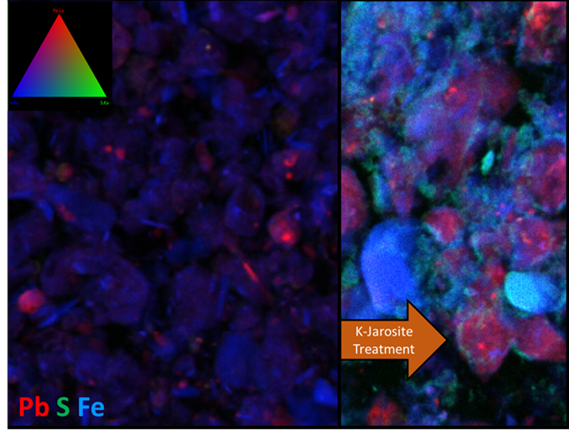Lead Exposure through Household Dust and Soil: EPA Researchers Looking for a Solution

Published October 5, 2021
Over the past few decades, while the amount of lead in food, air, and other media have declined, lead levels in urban soils have increased. Also, lead is the second most commonly occurring contaminant found at Superfund and contaminated sites. This increasing prevalence of lead-contaminated soil has resulted in it being a relatively significant contributor of childhood exposure to lead. Because children are especially vulnerable to many adverse effects of lead, reducing exposure from soil ingestion is an important public health goal.
Certain forms of lead are not bioavailable, meaning they are not fully absorbed by the human body. Several years ago, EPA developed a tool based on a “virtual stomach” that mimics human digestion, to estimate the bioavailability of lead in soils. This tool can be important in assessing health risks because - while it is helpful to know how much lead is in soil - it is even more helpful to know how much of it would be harmful to people.
Now, EPA researchers are investigating the potential of soil additives, or amendments, in helping to reduce childhood exposure to lead. If successful, the amendments would bind with the lead and stop any of it that is ingested by people from being absorbed into the gastrointestinal system. This has the potential to reduce human lead exposure and potentially save millions of dollars in cleanup costs.
As part of this effort, EPA scientists are identifying which treatment methods are the most effective. EPA researchers and partners added iron sulfate and heat to lead-contaminated soils. This promoted the formation of plumbojarosite, a mineral that is mostly, but not entirely, insoluble. They conducted mouse assays and found that lead levels were significantly lower with amended soils than with untreated soils. In fact, the authors estimated that the relative bioavailability of lead in the soils tested was reduced by more than 90 percent compared to untreated soils. These results indicate that this treatment is substantially more effective than other soil amendments that EPA and other researchers have investigated in the past. Therefore, the authors believe that plumbojarosite in contaminated soils can help minimize soil as a source of lead exposure for young children.
In another study, EPA researchers and their collaborators used X-ray absorption spectroscopy (XAS) to better understand the connection between residential soil and house dust. XAS is millions of times brighter than the X-rays typically found in a doctor’s office and can help identify sources of lead contamination in homes and surrounding residential soils.
EPA researcher Tyler Sowers says that this XAS study is important because it “gives us a better understanding of the fraction of lead that may be highly available and of toxicological concern. We can also visually highlight individual elements in soils and house dust samples, allowing us to create a map that provides a window into chemical remediation on the microscale.”
In this study, EPA used XAS to identify species of lead in house dust and residential soils and the bioavailability of those species in mice. They found that lead (hydroxy)carbonate, a form commonly associated with lead-based paints, was the major lead species present in house dust. They also found the lead in these samples to be highly bioavailable. That means that if any of that dust was ingested by a person, it could very well find its way into that person’s bloodstream. This research corroborates results from a previous study that demonstrated high relative bioavailability of lead from paint in soil. The study also confirmed that the bioavailability of lead was relatively low in residential soil where the major lead species was plumbojarosite.
While soil excavation is a common method of remediating lead-contaminated soils, that can be costly. Since bioavailability is so important to determining whether people are impacted by lead in the environment, amendments that lessen lead’s bioavailability can be effective at mitigating exposure.
When asked whether soil amendments could be a practical strategy for minimizing lead exposure, EPA researcher Karen Bradham replied that, yes, they can be part of the solution.
“An integrated approach of bioavailability-lowering amendments and barrier methods that physically limit exposure may provide the best solution for reducing exposure risk, which is actively being explored by EPA,” said Bradham.
Learn more:
New Testing Method for Lead and Arsenic in Contaminated Soil Saves Money and Protects Public Health
Federal Action Plan to Reduce Childhood Lead Exposure
High Lead Bioavailability of Indoor Dust Contaminated with Paint Lead Species
Bioavailable Soil Pb Minimized by in situ Transformation to Plumbojarosite
